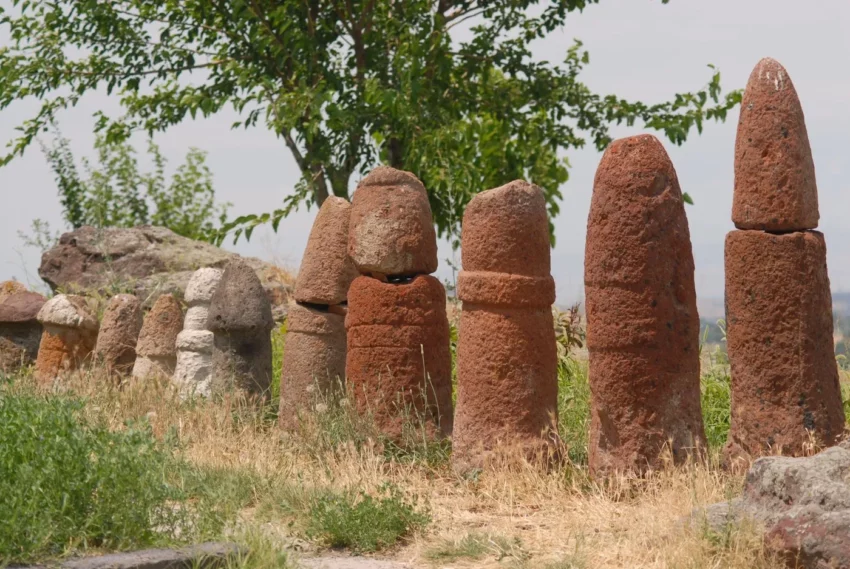Introduction to Metsamor: An Archaeological Insight
Metsamor, located in the Armavir Province of Armenia, near the village of Taronik, is a significant archaeological site that offers a window into the ancient civilizations of the region. The site encompasses the remnants of a once-thriving city, which played a pivotal role in the cultural and economic landscape of the Ararat Valley from the Bronze Age through medieval times.
Get your dose of History via Email
Historical Overview of Metsamor
The earliest settlements at Metsamor date back to the turn of the 4th millennium BC, during the Chalcolithic period. The site evolved significantly over the centuries, reaching its zenith in the Late Bronze and Early Iron Ages (15th–8th century BC) when it became a major religious and economic center. Notably, the city was fortified with a cyclopean wall and featured a complex of small temples on its southern slope, indicative of its spiritual and cultural significance.
During the 8th century BC, Metsamor became part of the expansive Urartian Empire. This period was marked by significant turmoil, including wars and destruction, followed by a brief abandonment of the site. However, it was soon repopulated under the Urartian rule, which restored and further fortified the city.
Archaeological Excavations at Metsamor
Systematic archaeological research at Metsamor began in 1965 and has been instrumental in uncovering the rich history of the site. Initial excavations were led by Armenian archaeologists Emma Khanzadyan and Koryun Mkrtchyan up until the 1990s. More recent excavations from 2011 to 2013 were directed by Ashot Piliposyan. Since 2013, an Armenian-Polish expedition has been ongoing, co-directed by Krzysztof Jakubiak of the University of Warsaw and Ashot Piliposyan, highlighting international cooperation in uncovering the site’s past.
The excavations have revealed a continuous stratigraphic sequence from the Bronze Age through to the 17th century AD. Among the notable discoveries are a large religious complex with cascading clay altars and significant metallurgical production facilities, including a copper smelter dating back to the 4th millennium BC.
The Metsamor Museum
Adjacent to the archaeological site, the Metsamor Museum, established in 1968, serves as a repository for over 27,000 artifacts unearthed during the excavations. The museum’s collections span three floors, showcasing items from different periods of the site’s history, from Urartian artifacts to jewelry and crafts that depict the cultural richness of historic Metsamor. Noteworthy items include an agate frog from the late 16th century BC and a carnelian seal with Egyptian hieroglyphs, evidencing Metsamor’s connections with distant civilizations.
Conclusion
Metsamor stands as a testament to the advanced urban planning, architectural prowess, and cultural vibrancy of the ancient societies that inhabited the Ararat Valley. The ongoing archaeological efforts continue to provide invaluable insights into the life and times of its past inhabitants, making Metsamor a key site for understanding the historical dynamics of the region.
Sources:

